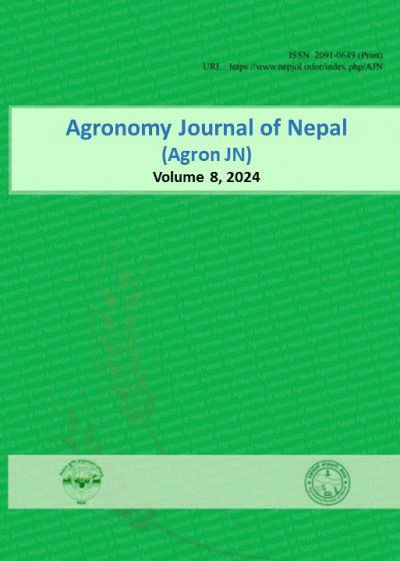Validation of Digital Soil Map in Maize Growing Areas of Chitwan, Nepal
DOI:
https://doi.org/10.3126/ajn.v8i1.70850Keywords:
Nutrient balance, potassium mining, soil polygon analysis, soil nutrientsAbstract
National Soil Science Research Centre of the Nepal Agricultural Research Council (NARC) with technical support from the International Maize and Wheat Improvement Center developed Digital Soil Map (DSM), a web-based information system, in 2020 using the legacy data with a geospatial model using a random forest machine learning prediction approach. The map generated with the model predicted values besides geo-referenced points that require further validation. Since DSM was launched, no work has been done to validate the map. We sampled 452 points from all municipalities of the Chitwan district using a gridded sampling approach to validate the existing predicted values of the DSM. We found that the observed values such as soil texture, soil organic matter, and total nitrogen content were similar to the range values of DSM. Still, a discrepancy was found between the available potassium and phosphorous. In the majority of areas, the observed value of available soil potassium (20 – 450 kg K ha-1 ± 15 kg K ha-1) was found lower compared to the DSM values (118 – 330 kg K ha-1), however, available phosphorous (55 – 230 kg P ha-1 ± 10 kg P ha-1) was found higher compared to DSM range values (11 – 139 kg P ha-1). The maize growing area of Chitwan was found suitable with soil pH (6.4 – 6.8) and other nutrients except for available soil potassium. Most of the areas from Eastern and Western Chitwan reported potassium mining, which needs to be considered in balancing nutrients in field crops.
Downloads
Downloads
Published
How to Cite
Issue
Section
License
Copyright (c) 2024 Agronomy Society of Nepal (ASoN)

This work is licensed under a Creative Commons Attribution-NonCommercial 4.0 International License.
ASON permits for free use, distribution and reproduction in any medium if the original work is properly cited and not used for commercial purposes.




